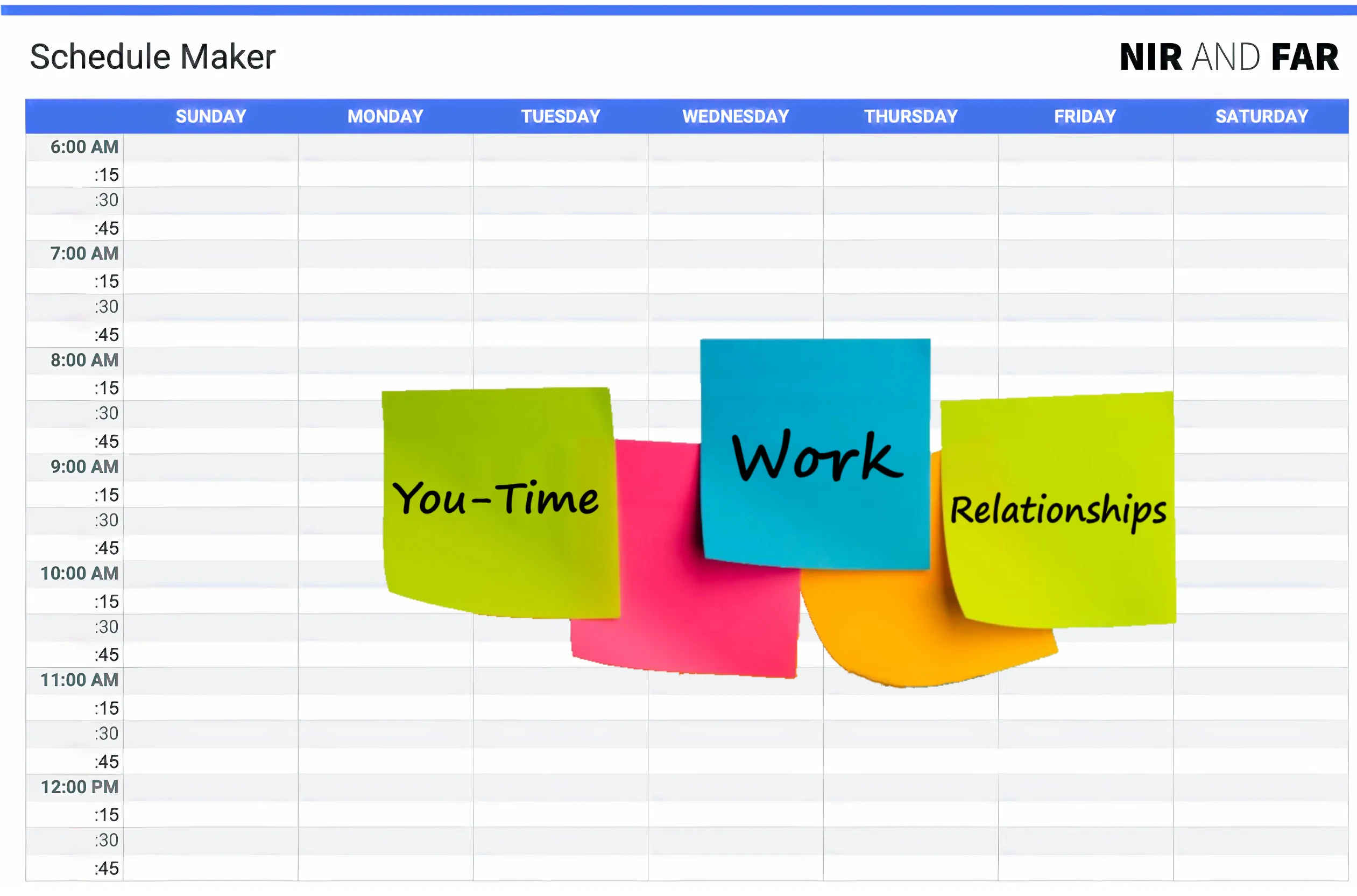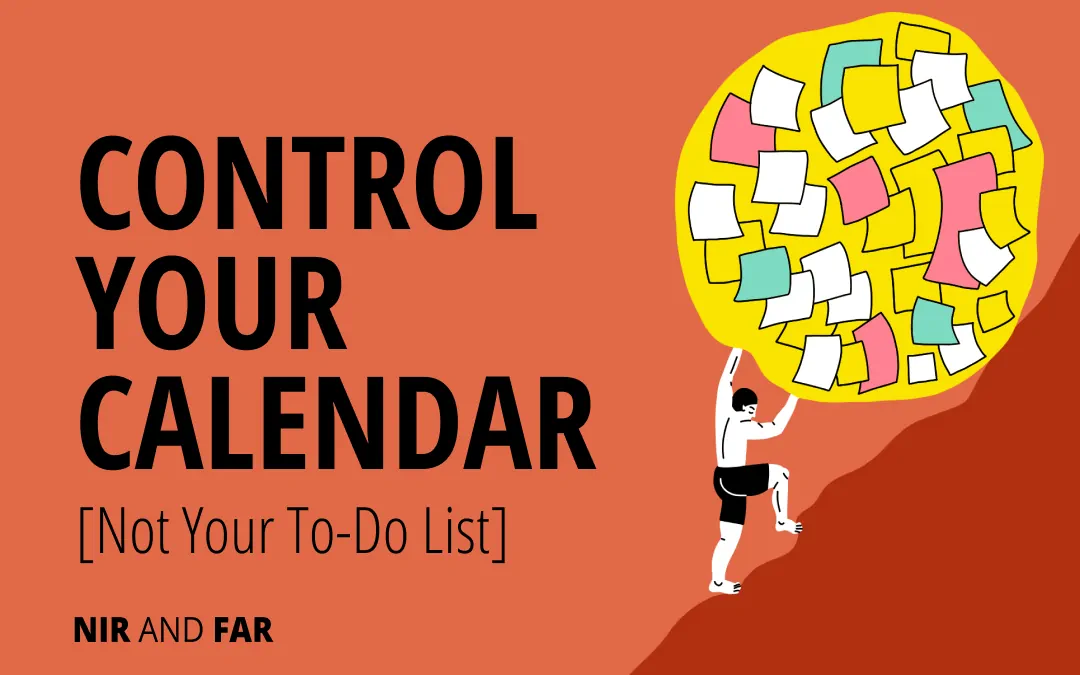Our society celebrates getting things done. Long hours, overflowing inboxes, and maxed-out calendars become badges of honor. But this relentless pursuit of output can leave us feeling drained, disconnected, and unfulfilled. We neglect the things that truly matter to us–family, personal growth, health–because tasks, not our values, dictate our days.
When it comes to getting the most out of our time, we should stop worrying about outcomes we can’t control and instead focus on the inputs we can.
Take a friend of mine who is a freelance editor. In order to manage her work day and clients better, she tracked her word count for years to discover how fast she could edit a given number of words, then used that knowledge to schedule as many projects as she could reasonably fit into a day.
Seems reasonable, but the strategy failed miserably.
Whether each project needed a heavier level of editing than anticipated or a quick-turnover project came in from another client, my friend often found herself off track. That meant she frequently worked longer days than planned and often canceled plans with family and friends.
Analyzing her editing speed was nice, but no matter how many productivity metrics we have, something will always get in the way of what we intend to do. If my friend wanted a better work-life balance, she should have blocked off the hours she wanted to work and honored them by starting and ending when she said she would.
Successfully managing our time means sticking to what we say we will do no matter what. It’s about living with integrity to yourself and others.
The outputs of our time spent doing something are a hope, not a certainty. We can’t control how many tasks we complete in a day, but we can control our input—the time and the attention we put into a task.

Turn Your Values into Time
Living by your values is the antidote to society’s dysfunctional approach to productivity, and timeboxing is a productivity tool to help you turn your values into time.
Timeboxing helps you focus on input (your time and attention), rather than output (which you can’t always control). But society’s obsession with output means people often misuse a timeboxed calendar as a scheduled to-do list.
While my editor friend’s approach to time management was well-intentioned, it was not timeboxing. Timeboxing is not output-based. It’s not meant to help you cram as many tasks into a day as you can.
To timebox correctly, you must identify your values, which are attributes of the person you want to be. Values are not end goals or outcomes, like being wealthy. We never achieve our values—just as we don’t say we’ve achieved “determination” by finishing one goal.
Values can’t be taken away from you, as money can be. They are core traits of our ideal selves that guide our actions. For example, your values may include being a vital community member, being a loving parent, or being determined.
Write down your values (using this list of values if you need a starting point). It is helpful to categorize your values into three life domains: yourself, your work, and your relationships.
Now, turn those values into time. List the activities and tasks that exercise your values. These are the activities that you will plot into your weekly timeboxed calendar.
Use my free schedule maker to add each activity to your week. (This process will help you prioritize important tasks, since you can’t fit everything!) Every week, schedule 15 minutes to review last week’s calendar and make adjustments to your following week to make next week’s plan easier to follow.
The best way to be productive is to devote time and attention to the activities that matter, without distraction—not showing up guarantees failure. Using timeboxing, we create a map that shows us what we need to do to live our own definition of a full, productive life.

Time and Attention
Once you’ve built a timeboxed calendar, you need to learn to control your attention and keep it on the tasks you planned to do, when you planned to do them.
Endless distractions pull us away from what we plan to do, and it’s a massive drain on our productivity. How often has distraction caused you to need four hours to complete a task that should have taken two, for example?
That’s why I developed a four-step model for becoming Indistractable and devoting our attention to traction, toward what we plan to do.
The four steps to become Indistractable:
- Master internal triggers: Understand and manage the feelings that prompt you to distractions like social media when you plan to do something else.
- Make time for traction: The topic of this article, timeboxing allows us to make time for our values and identify distractions.
- Hack back external triggers: Curb external notifications and interruptions that steal your attention.
- Prevent distraction with pacts: Precommit to doing what you plan to do.
Free Habit Tracker
Design your ideal day and build your best life.
Your email address is safe. I don't do the spam thing. Unsubscribe anytime. Privacy Policy.
Forget trying to fit in as much as you can in a day. Giving your full attention, without distraction, to planned values-based tasks makes you productive.
Input is much more certain and specific than outcome. Productivity and success can’t be measured only by the number of items crossed off on your to-do list. When it comes to living the life you want, making sure you allocate time to living your values is the only thing you should focus on.
Stop trying to squeeze everything in, and start making space for the things that make life truly meaningful. Plan your time, control your attention, and the outcome will follow.
Related Articles
- Schedule Maker: a Google Sheet to Plan Your Week
- Habit Tracker Template in Google Sheets
- The Ultimate Core Values List: Your Guide to Personal Growth
- Timeboxing: Why It Works and How to Get Started in 2025
- An Illustrated Guide to the 4 Types of Liars
- Hyperbolic Discounting: Why You Make Terrible Life Choices
- Happiness Hack: This One Ritual Made Me Much Happier

